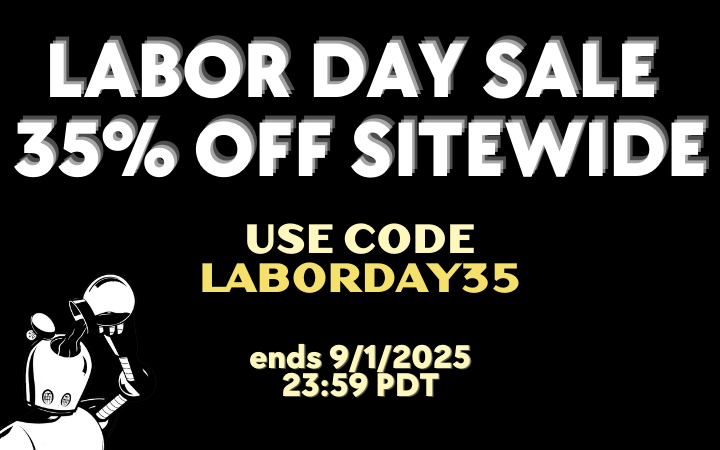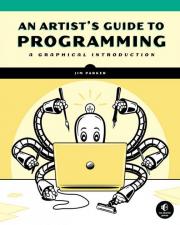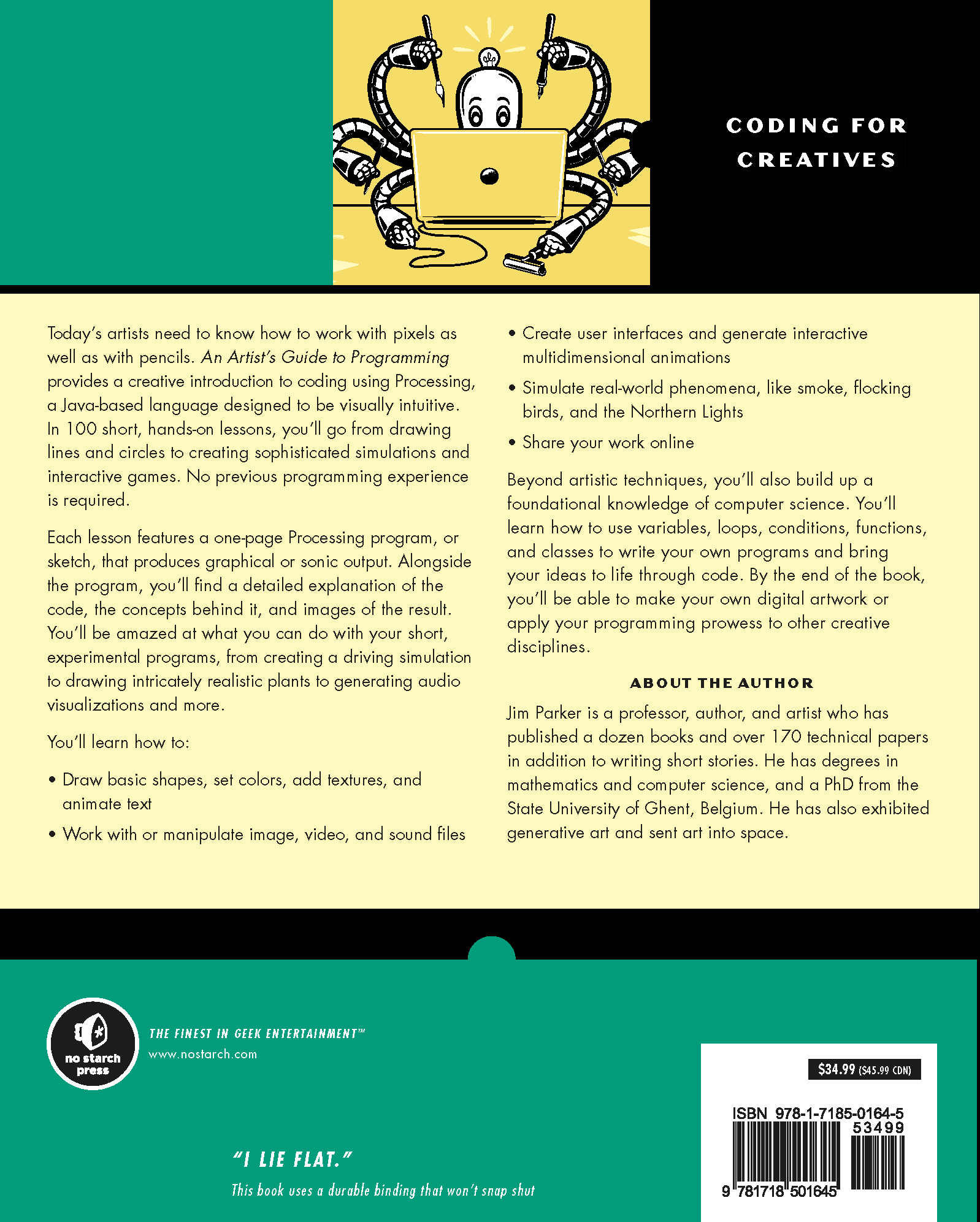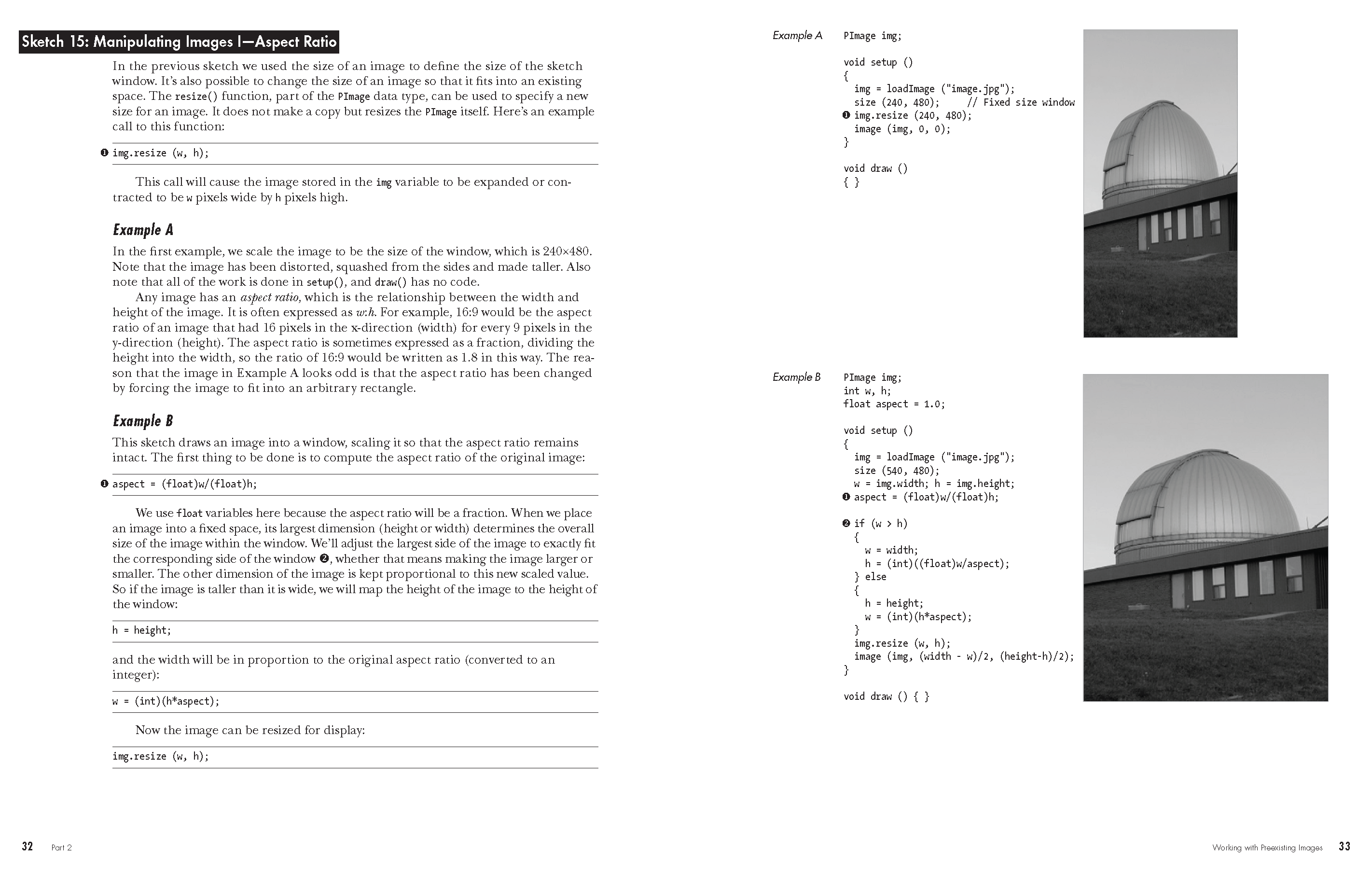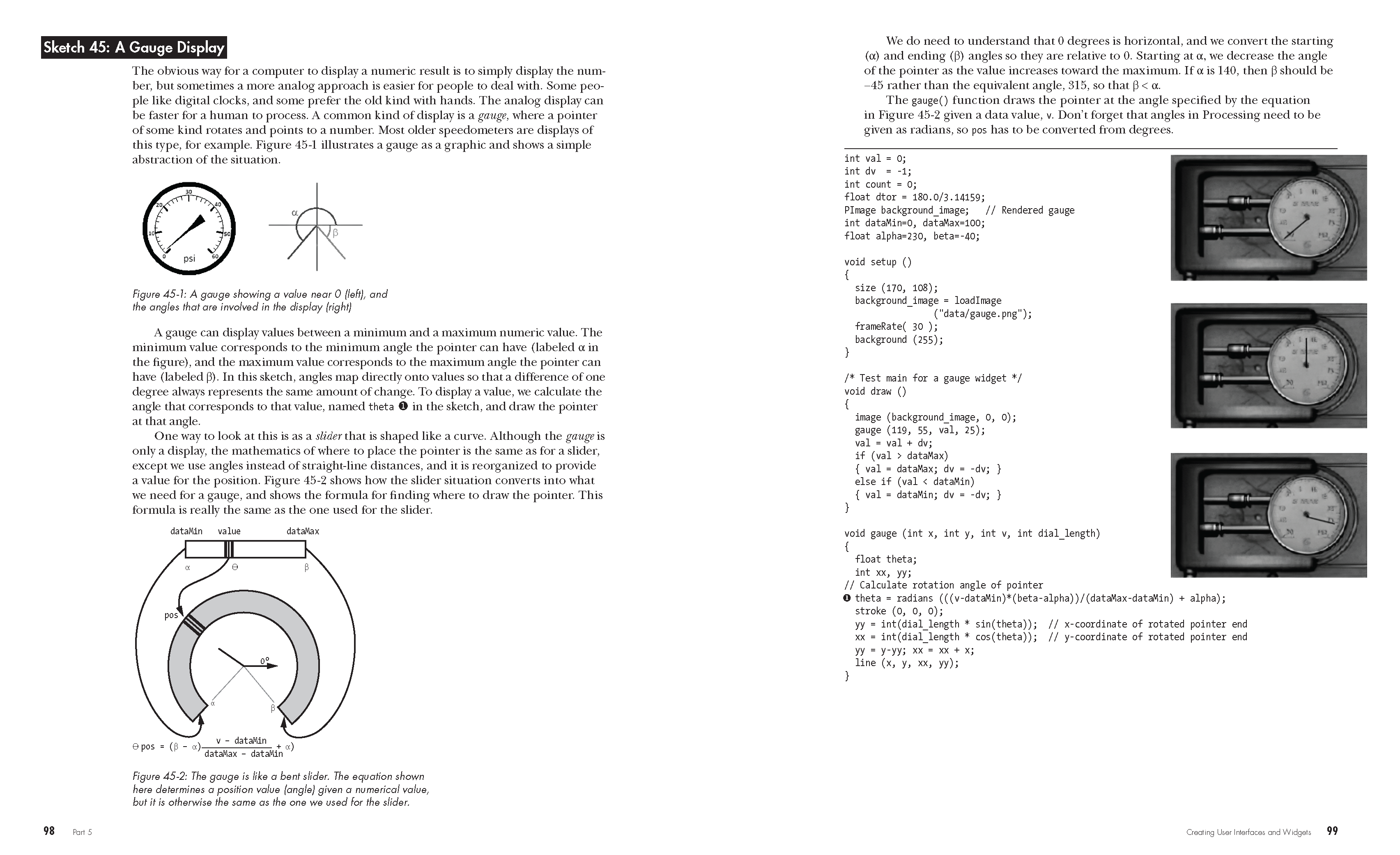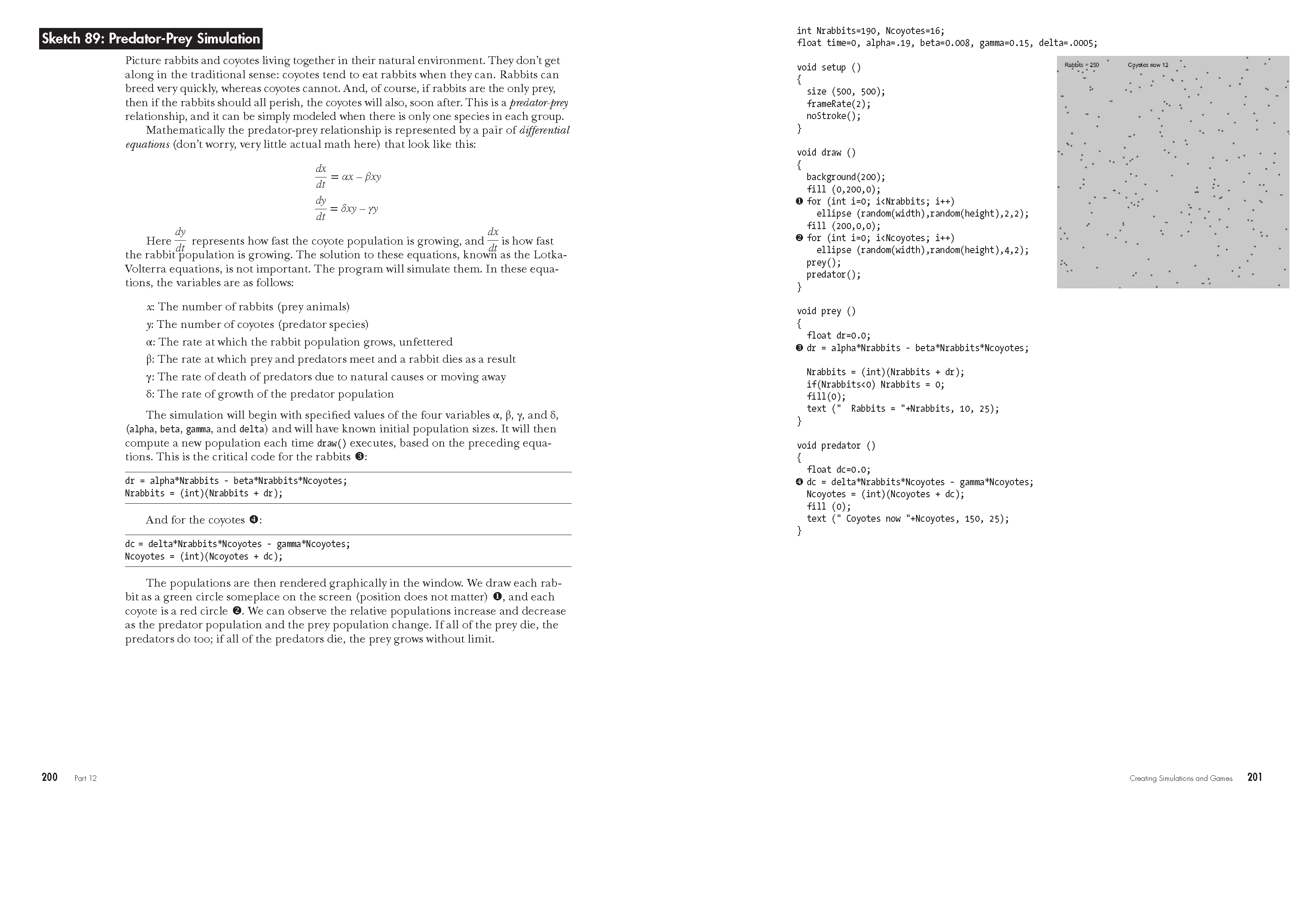Author’s Note
Introduction
Part 1: The Fundamentals of Drawing
Part 2: Working with Preexisting Images
Part 3: 2D Graphics and Animation
Part 4: Working with Text and Files
Part 5: Creating User Interfaces and Widgets
Part 6: Network Communications
Part 7: 3D Graphics and Animation
Part 8: Advanced Graphics and Animation
Part 9: Working with Sound
Part 10: Working with Video
Part 11: Measuring and Simulating Time
Part 12: Creating Simulations and Games
Part 13: Making Your Work Public
An Artist's Guide to Programming
Look Inside!
Download Chapter 3: 2D GRAPHICS AND ANIMATION
An Artist's Guide to Programming teaches computer programming with the aid of 100 example programs, each of which integrates graphical or sound output. The Processing-language-based examples range from drawing a circle and animating bouncing balls to 3D graphics, audio visualization, and interactive games.
Readers learn core programming concepts like conditions, loops, arrays, strings and functions, as well as how to use Processing to draw lines, shapes, and 3D objects. They’ll learn key computer graphics concepts like manipulating images, animating text, mapping textures onto objects, and working with video. Advanced examples include sound effects and audio visualization, network communication, 3D geometry and animation, simulations of snow and smoke, predator-prey populations, and interactive games.


